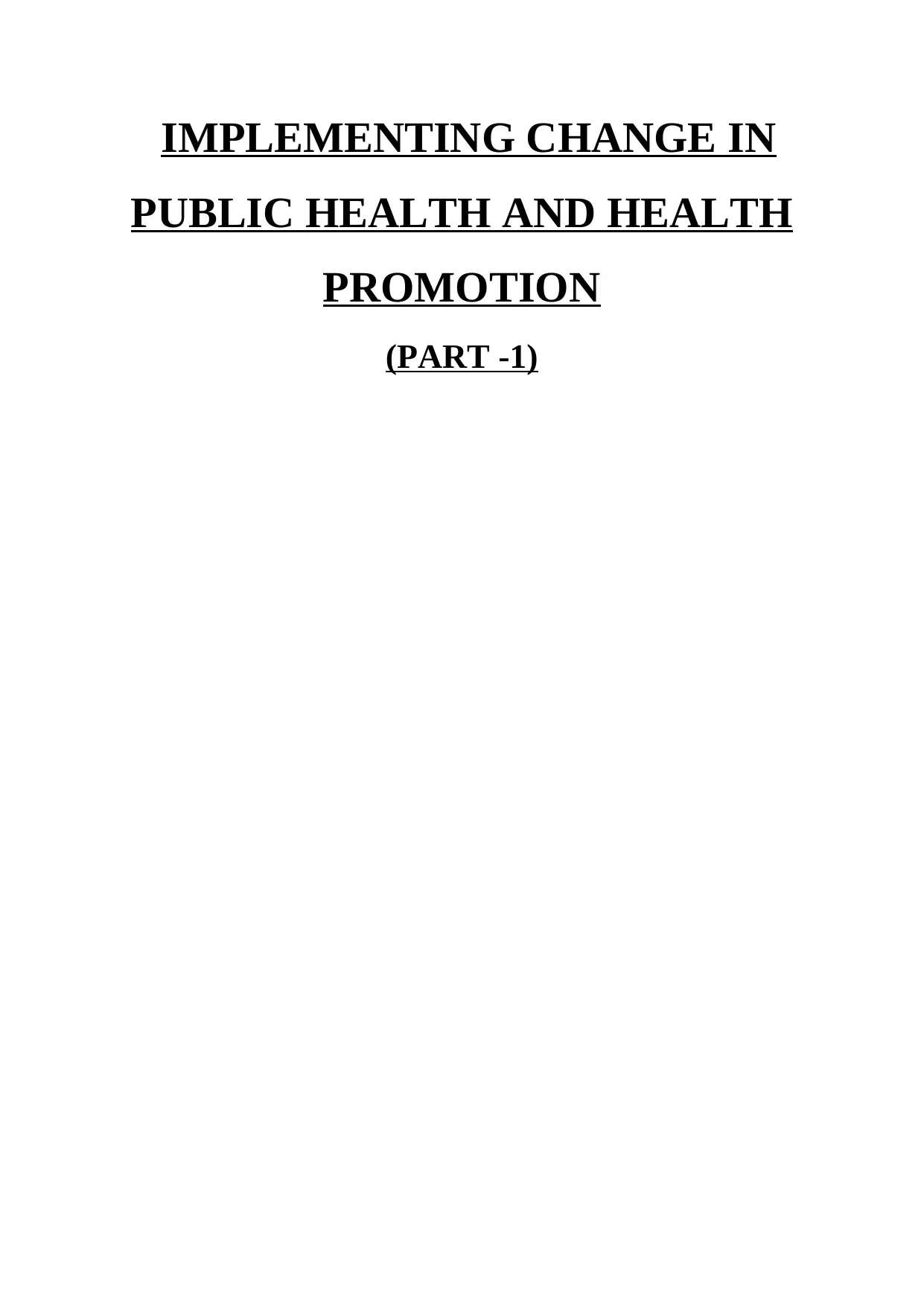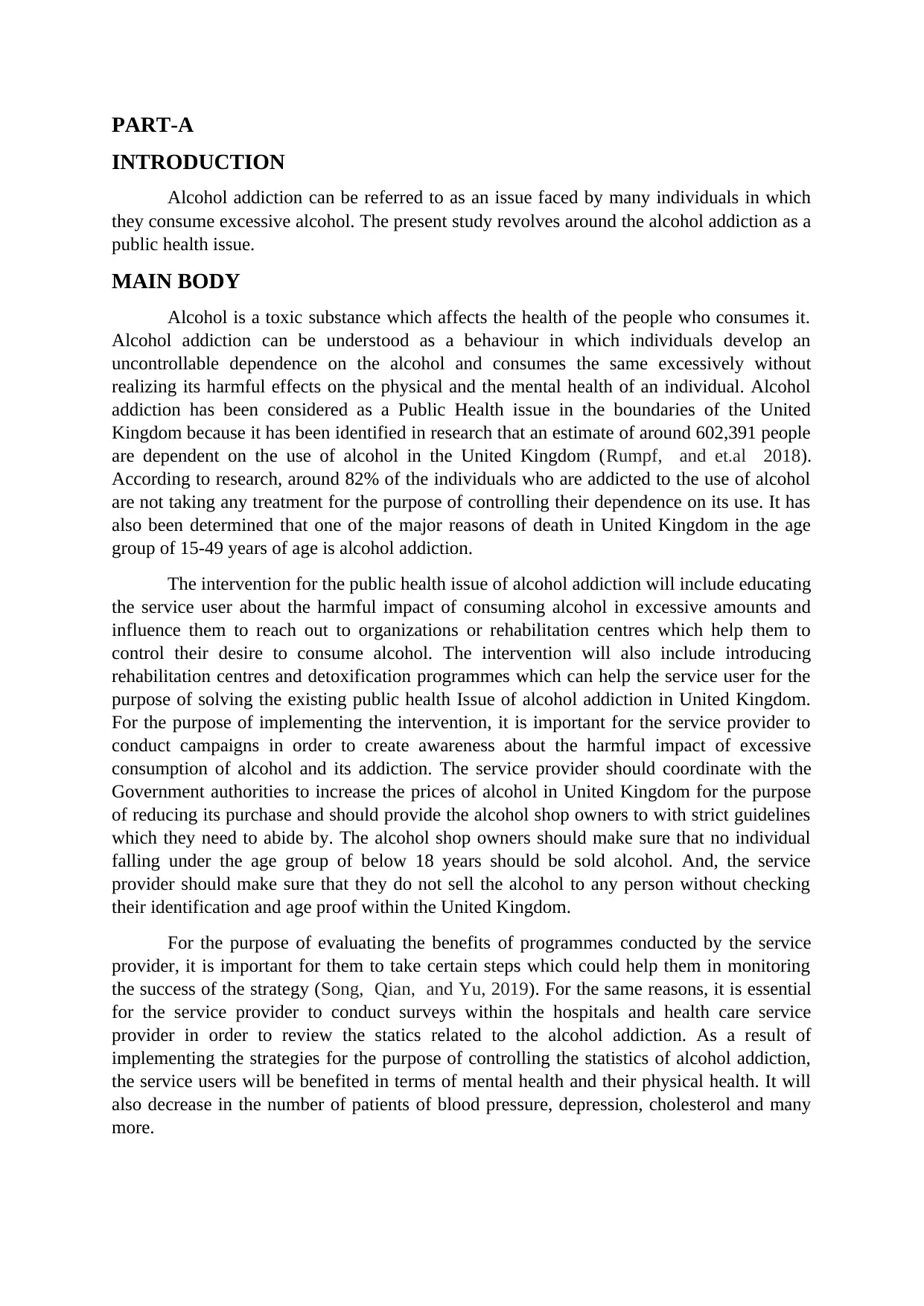Public Health Intervention: Addressing Alcohol Addiction in the UK
VerifiedAdded on 2023/06/11
|5
|738
|192
Report
AI Summary
This report addresses alcohol addiction as a significant public health issue in the United Kingdom, highlighting its impact on individuals aged 15-49 and the broader population. It emphasizes that a substantial percentage of those addicted do not seek treatment. The proposed intervention focuses on educating service users about the harmful effects of excessive alcohol consumption and directing them to rehabilitation centers and detoxification programs. Strategies for implementation include awareness campaigns, collaboration with government authorities to increase alcohol prices, and strict guidelines for alcohol shop owners to prevent sales to minors. Evaluation methods involve conducting surveys within hospitals and healthcare providers to monitor the success of these strategies, with the anticipated benefits being improvements in service users' mental and physical health, as well as a reduction in related health issues such as blood pressure and depression.
1 out of 5












![[object Object]](/_next/static/media/star-bottom.7253800d.svg)